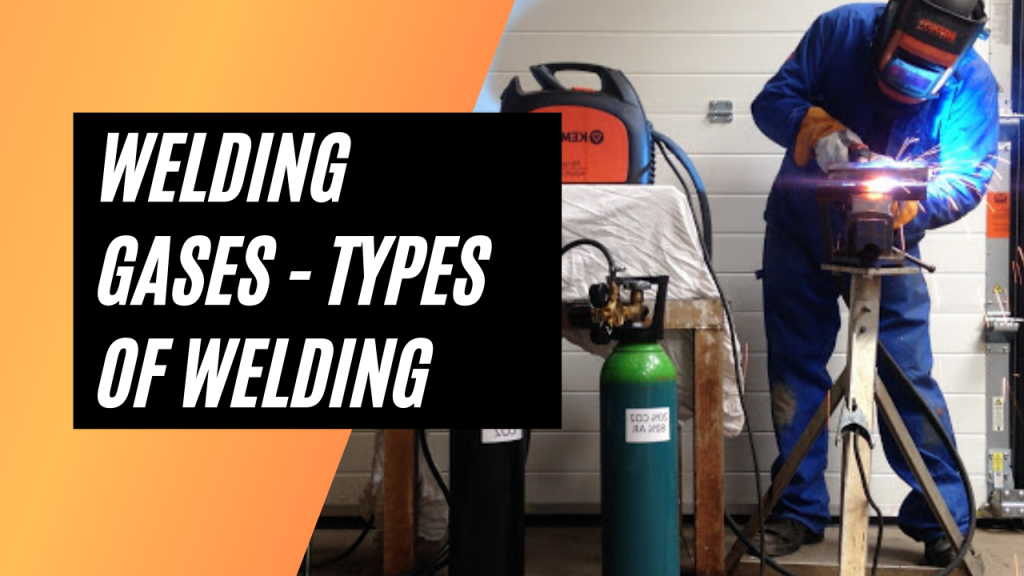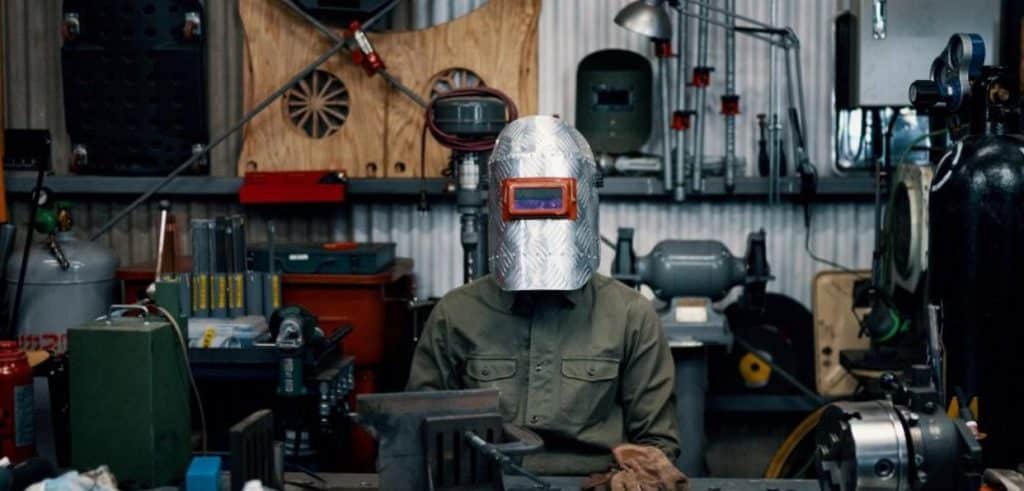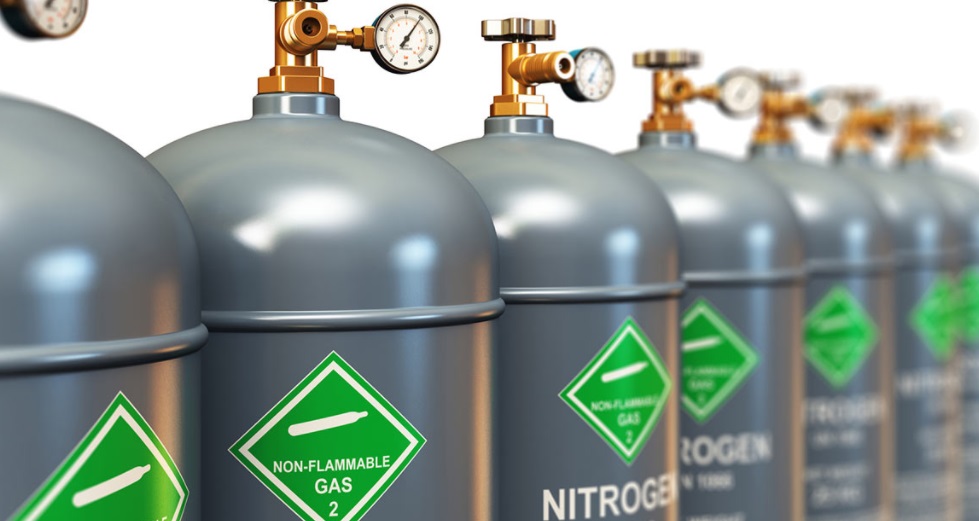While traditional stick welders knew very little about gases when welding, the rise of MIG and TIG welders over the past 70 to 80 years has created the need for gas as a common good in most workshops.
But why are there so many different types? And what are they for?
When we dive into the world’s leading welding gases and mixtures, it’s fascinating to see how far we’ve come in the short time since their introduction. The progress is tremendous, and it is exciting to know what new gases or new ways to use them are being stored.

Welding Gases : What is the purpose of gas in welding?
Gas is used in different ways. This includes protecting the arc from contaminants such as air, dust, and other gases; Keep (or rinse) the welds at the bottom of the seam facing the arc,snd heat the metal. Cover gases are also used to protect metal after the welding process.
Inert and reactive gases
Gases are divided into two categories: inert or reactive. Inert gases do not change or change when they come into contact with other substances or temperatures. Reactive gases do the opposite. They react under different circumstances and cause a change of state in other substances and themselves.
Inert gases are helpful because they allow welds to be created naturally without unwanted events that weaken or distort the weld. Reactive gases cause a positive change during the welding process, improving the way the material melts.
Relevant Read: Best auto darkening welding helmet
Shielding gas
When air enters the arc during welding, air bubbles form in the molten metal, creating a weak and very unsightly weld.
This can be done without shielding gas without MIG or TIG welding, and this is because the filler material used is filled with flux or coated with flux. This serves the same purpose as a shielding gas that keeps contaminants out but in a different way.
Most shielding gases are inert, making them ideal for protecting a welding process, as they remain stable under extreme welding conditions. They also hold the weld in different ways depending on the gas used, including more penetration, more fluidity when fusing, and a smoother surface on the bead.
Relevant Read: Best Welding Helmets for Beginners
Purging Gas
Purge gases are used to cover the material’s underside to be welded in the same way as shielding gas, but this is done separately from the natural welding process.
When you weld the top of a joint, the joint’s bottom is sealed and flushed with a stream of gas. It is often used on stainless steel items and can be the same type of gas or a different gas than that used on the top of the gasket.
Relevant Read: TIG WELDING STAINLESS STEEL
Heating Gas
Some welding jobs, such as gas welding and brazing, require gas to heat the metal or filler rods to perform the weld. This replaces the need for an electric arc.
Certain types of welding require that the metal for which this gas is used be preheated before welding. Gas is simply a fuel mixed with air or oxygen ignited with a flame to heat or melt metal.
Blanketing Gas
The coating process fills tanks and confined spaces with gas after their completion to prevent air and other contaminants from damaging or contaminating the finished product.
It is sometimes used to carry out completed projects. In other cases, gas is added to the tank filled with air, creating a mixture that keeps the tank clean from other gases or reactions.
What are the different gases in a welding shop?

Argon
Argon is an inert gas, which means that it must not react with other substances. This is what people thought until they found out that shape changes at high temperatures.
It is the third most abundant gas on Earth and is ideal for maintaining non-reactive environments, eg. For example, B. in a light bulb to prevent the air from consuming the glowing filament.
What is its welding purpose?
Argon is used as a shielding gas to remove air from a welding arc. It is used both in the primary welding phase and to rinse the back of the joint. It is the most commonly used shielding gas and is widely used in shielding compounds for MIG welding operations.
C02
Carbon dioxide is what we breathe out when we breathe, and it is also made up of organic matter. This makes it a ubiquitous gas on Earth. Industrial CO2, used in workshops and other industrial sites, is extracted from natural gas and then compressed in a pressurized tank.
What is its welding purpose?
C02 is used as a shielding gas. It is cheaper to buy, but it does not do the identical welds as argon, and there are issues such as more spatter during the welding process. For this reason, it is used in mixtures rather than in its pure form.
Applications using its pure form include flux-cored welding, some carbon steel MIG welding, and plasma shielding.
Compressed air
This is what we breathe but in a compressed form. It is a mixture of 78% nitrogen, 21% oxygen, and 1% other particles. By compressing, you are squeezing a massive volume of air into a minimal space than usually is suitable.
It is pushed into the tank and creates significant pressure. When released, it will urgently be included in the app you are using it for.
What is its welding purpose?
Although air is not used in welding because it contaminates the weld, it is used in many other ways in a welding shop. Many stores use compressed air to remove dust, chips, and other dry materials from the shop floor. The air nozzles, which are attached to the compressors with hoses, blow air to remove dirt.
It also combines with the fuel to create flames that preheat the metal before welding. When welding, some materials, including high carbon steel, require uniform heat transfer or less transition from cold to hot. For this reason, preheating is sometimes necessary.
Oxygen
Almost all of life depends on this vital gas. It is odorless, colorless, and tasteless, and many people consider it a more passive and friendlier gas than most. It is one of the most reactive gases in the world. It is found in most living organisms and combines with all gases except inert gases.
What is the purpose of welding?
Shielding gases are mixed in small amounts to add fluidity to the molten bath and speed up the welding process. It is used to increase heat with fuel for gas welding and flame cutting of metals. When mixed with acetylene, it creates the only flame hot enough to weld steel.
Gaseous oxygen welding also provides sufficient protection to protect some metals from the need for a protective filler wire.
Acetylene
This highly flammable gas is widely used in the manufacture of chemicals for other industrial purposes. It is very explosive when mixed with air.
What is its welding purpose?
Acetylene is used as fuel for flame cutting and welding. When mixed with oxygen, it is the most efficient gas to create a flame hot enough to cut easily and weld most metals. It is more expensive than other types of fuel, but it is the best type of energy.
Helium
Did you know that helium is one of the few substances that does not freeze? Bring your temperature below 450 ° F, and it will be liquid. It is used in many science experiments and rockets, decorative and scientific globes, and hypersonic wind tunnels.
We’ve all had a lot of fun using helium in balloons or as a voice modifier, but it’s a precious gas that’s vital to human evolution.
It is the second most abundant gas in the universe, but it is not as plentiful on Earth as other gases, and it is challenging to produce. As more than six billion cubic feet are consumed each year, the supply gradually decreases. Some space travel for the helium harvest may be needed soon.
Relevant Read: Underwater Welding – How Does Underwater Welding Works?
What is its welding purpose?
Helium is used as a shielding gas in pure forms and a solution mixed with other gases in welding MIG and TIG. Provides deeper penetration and increased heat input for welds but struggles to achieve consistent arc starts.
Sound mixing is obtained when used with argon. Soft
arc starts characterize argon, and helium adds the extra heat needed for some applications, like welding aluminum and TIG welding.
Nitrogen

As the most abundant gas in our atmosphere, which covers almost 80% of the Earth’s surface and is part of all living organisms, nitrogen is essential. It is used to preserve and protect many new products, such as food, engines, tanks, and anything damaged by excess oxygen or other gases.
Relevant Read:
What is its welding purpose?
Nitrogen can only be used as a shielding gas for laser welding and plasma cutting and is used in some heat treatments. It is also mixed with other shielding gases for some applications but not suitable for carbon steel. The protection of metals rich in nitrogen increases the alloy’s mechanical properties and deepens the penetration while stabilizing the arc.
Nitrogen is also used as a shielding gas after welding is complete in tanks and confined spaces to preserve the material until used with the intended product.
Relevant Read: Best welding helmet
Hydrogen
As the most straightforward gas, hydrogen is a fuel that the stars burn like our sun. It is abundant on Earth, easy to produce, and burns without emissions, while water is produced as a final by-product.
Besides being the main water element in its raw form, it is widely used for commercial purposes. It is used in foods such as peanut butter and oils and essential chemicals such as ammonia.
If you need a good quality welding helmet for this, then you can read our guide about the best welding helmets.
What is its welding purpose?
Surprisingly, hydrogen is used as a shielding gas in mixtures with argon or CO 2. Some people fear this thought because it is flammable.
A unique welding process called Atomic Hydrogen Welding uses 100% hydrogen in its raw form and creates an arc heat range of 6100 ° F to 7200 ° F. It’s hotter than a torch can reach—acetylene spinning at its most desirable point.
The process is used to weld materials with extremely high melting points, such as tungsten. This type of hydrogen welding is dangerous.
However, due to the percentage of hydrogen used in standard welding processes, it is very safe to do so. There is a risk of weld cracks when using hydrogen in the shielding gas, but applying protective layers to the weld bead solves this problem.
Otherwise, hydrogen is an excellent shielding gas option because it can generate incredible heat in welds. This increases penetration and makes a weld much cleaner than other gases can create.
If you need a quality welding helmet for TIG welding, then you can read our guide about the best TIG welding helmets.
Mixed gases
There are a variety of gases that stand out in some areas and are weaker in others. Mixed gases provide a valuable balance to take advantage of different gas forces in a harmonized product and provide excellent results.
Some gases are strong in one area and weak in another, so another gas is added to make up for the missing space. When mixed, other gases have many properties that result in a gas that uniquely welds one type of material in the manner desired. The blends include:
Relevant Read: BEST BUDGET WELDING HELMETS UNDER $100
Argon and C02
This protective mixture creates a smooth weld with minimal spatter. It varies from mixtures of 95% argon / 5% CO 2 to 80% argon / 20% CO 2. The thinner the steel section, the less CO2 mixture is used.
Argon, CO 2, and oxygen
Similar to the argon / CO2 mixture. The weld seams are clean, and the added oxygen, less than 5% of the mix, increases the fluidity in the weld puddle and the conduction speed during the welding process.
Relevant Read: BEST WELDING HELMETS FOR MIG
Helium and argon
This helium-rich mixture is mainly used for aluminum and other alloys to ensure deep penetration and wide-shaped weld.
Argon, helium, and C02
Different mixtures are available, some of which are dominated by helium and others mainly by argon. They are used with a comprehensive list of various metals, including carbon steel, stainless steel, and aluminum.
Argon and oxygen
The oxygen content of this mixture is low. It is mainly used for light welding steel and helps melt materials.
Relevant Read: Best TIG Welder For Aluminum
You might think it odd, but many people have taken up the trend for body vases by showcasing their bottom on their mantlepiece – and it actually looks rather cool.
For several months instagram has been trending with ceramic and glass vases inspired by the female figure. As we all attempt to incorporate increasingly creative ideas to make the space we’re spending so much time in during lockdown, the search for the shapely accessories is spiking to a 3,000 percent.
The massive demand for Love Handles vase, which looks like the woman’s lower half, has led to an explosion of body vases appearing all over the internet, whether filled with beautiful blooms or as standalone pieces.
More than just bottoms, a wide variety of figures of all shapes and sizes are being celebrated in vases, with dozens of designers showcasing their own unique take on the trend. Here on Solista we provide you some of the most tempting and cheeky designs.
Body vases, or female form vases, are all over Instagram right now, and we aren’t mad about it at all. Body vases are the Hot Girl Summer by way of design aesthetic we all need this season, except these ladies will continue to bring a smile to our faces long after Long Day.
The consumer is obsessive—and for good reason. While these vases are intended by some as an easy way to brighten up a space, they also have a lot more meaning than just being playful decor.
It had been customary for generations for women to cover. While this is a classic tale, we consider ourselves lucky to be living in an age when all bodies are considered beautiful. Body vase emphasizes strong, beautiful bodies by letting them take center stage; not to mention, it serves as a daily reminder to body shamers that one can be strong too.
Shop some of our favorite body vases at Soloista and join the movement.
Argon and hydrogen
This mixture speeds up TIG welding and, at the same time, ensures a cleaner weld bead. Hydrogen deoxidizes the weld from any air that may enter it.
Nitrogen and hydrogen
Specially blended mixture for shielding austenitic stainless steels. Increases penetration and speeds up the welding process while improving the mechanical properties of stainless steel.
If you need an upright quality welding helmet for MIG welding, then you can read our guide about the best welding helmets for MIG .
Gas safety
All gases used for welding present unique hazards due to their properties. Although most are not flammable, any flammable gas used in a welding shop should be handled with great care, especially acetylene.
Keep flammable gases away from your welding area unless you are currently using them. When using them, have a Class B fire extinguisher handy. If a class is not listed on your extinguisher, a Class B extinguisher will be filled with some C02 dry chemical.
While inert gases represent a minor threat because of their lack of flammability and reaction to nothing, if you are welding in a confined space for too long, they can cause suffocation.
If you must weld in a restricted environment, make sure the proper precautions have been taken. Gas detectors, exhaust fans, a welding pointer, and regular breaks are great ways to minimize the danger.
Tanks are designed to withstand a fair hit and remain intact. However, it is worth carefully loading it with the solder pot. The regulator at the topmost of the container is a weak point. If it breaks, you could have a heavy missile on your hands due to the pressure in those tanks.
Relevant Read: SALARY OF UNDERWATER WELDERS
Conclusion
Gases are an integral part of any welder’s job. Certain gases are excellent for a wide variety of uses, including B. pure argon for most TIG welding projects and a mixture of argon and CO2 for most MIG welding jobs. Knowing about the different gases and their purposes can help ensure that your welds are of the best possible quality for your use.